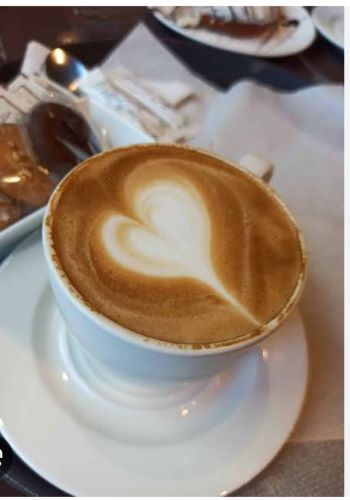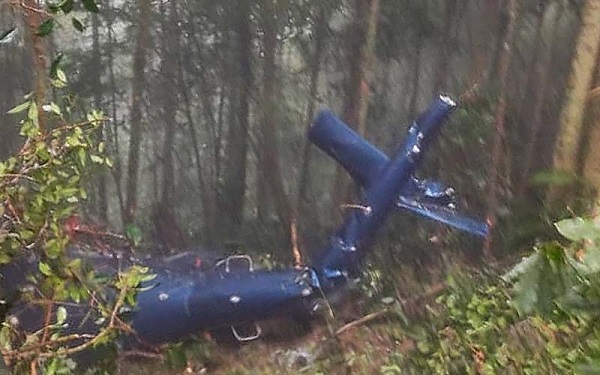THE ASIAN INDEPENDENT UK-

Writer: Yadwahad ‘Deedawar’
In the heart of Doaba, there once stood a Indian Coffee House in the very center of the city. Though there is little hope left for its revival, the intellectuals and admirers know well what those walls have heard and witnessed. That Coffee House wasn’t just a place to sip coffee — it was as precious in its own right as Mumbai’s ‘Jinnah House’ is today.
Many playwrights, poets, and intellectual journalists, who once engaged in fiery debates here, have now departed from this world. One person still alive is a technician — a multitalented man who not only worked as an electrician there but also helped brew coffee in the evenings. Back in the day, when the Coffee House was thriving, this man would serve liquor to intellectuals and journalists as per their orders, since the patrons were known to tip generously. Today’s generation of laptop and mobile-driven journalists, who do PR for institutions and rely heavily on press notes, show no interest in reviving such a space.
Years ago, patrons would spend ten rupees for a cup of coffee — quite expensive at the time. Pash, who came from Talwandi Salem, would sit there and work on the sequencing of his poems Siaar, Jantak Leeh, and Rohile Baan. His friend Amitoj, who at times became Krishan Kanwal and sometimes Krishan Adeeb, continued to visit even after becoming “Amitoj.” The Coffee House regularly hosted dramatists like Surjeet Sethi, Prof. Mohan Singh, Deepak Jalandhari, Shyam Lal Talib, Surjeet Jalandhari (Jeevan Singh Sarinh), Fikr Tausvi, Gurbakhsh Singh Bannoana, and Suhail Singh — some approved and some unapproved disciples. Writers and columnists associated with Jantak Lehar and Lok Lehar frequented the place proudly. When gatherings formed, journalists like Inderjit Waahad Ankhi , Ramesh Chopra, S. Shinder, Photogragher Pyare Lal, Malkeet Singh Golden star UK, Narinder Dansiwalia, Swami Kulbhushan, Om Parkash Khemkarni, Yash, Surpat Singh Sevak, Bakhshinder, Amarjit Singh Aks, Harjinder Singh Dilgeer, and Inderpal Chhabra from Bindu magazine (now in the US) would also come from their nearby offices at Bhagat Singh Chowk. Occasionally, separatist leader Jagjit Singh Chauhan would drop in too, as his clinic was nearby. Literary figures like Naunihal Singh, whose land is now home to the Dilkusha Market, were also regulars. Many of those who once frequented this haven are now gone, while others sought political asylum in developed countries.
The electrician is still around and works in the media industry. He now serves drinks at the Press Club, behind the beer counter. He has witnessed the likes of playwrights, writers, painters, columnists, and politicians argue passionately in the 1970s, only to laugh and share coffee afterward. What a time that was! Nanak Chand Naaz, Gurdeep lal Saajan etc sitting there, would often write editorial pieces for Qaumi Dard and Jathedar on the spot. He had a deep bond with Master Tara Singh. Back then, individuals like Nand Lal “Aish,” Harish Chander Chadha, and Ramanand Sagar (creator of the Ramayan TV series) — who were associated with newspapers — would also gather there. Whenever Saathi Ludhianvi visited from London, he made it a point to stop by. Discussions ranged from Saadat Hasan Manto to Munshi Premchand, from Pastor Ghulam Qadir and poet Hafeez Jalandhari to General Zia-ul-Haq, Maxim Gorky, Albert Camus, Michel Foucault, Jiddu Krishnamurti, and Osho. Harcharan Singh of Des Punjab also knew of this spot. The journalists of that time had friendships with insightful filmmakers like K. Asif. At one point, there was even an idea to invite Jai Prakash Chouksey — the scriptwriter of films like Shayad and Ek Salesman Ki Atmakatha — but it never materialized. Chouksey, who has been writing the “Pardey k peechey ” column for Dainik Bhaskar for two decades, is a treasure trove of cinematic and philosophical insight.
The Coffee House was never merely a place to drink coffee — for that, we have Café Coffee Day now. Like the cafés of Paris, this place was a hub for intellectual debate, contemporary political analysis, literary dialogue, and journalistic insights. The electrician, now stationed at the beer counter of the Press Club, watches today’s journalists and especially the newcomers. Though he cannot express it fully, he recognizes the subtle differences between old-school and modern journalists. Unfortunately, meaningful debate and discussion have come to be seen as a form of social misconduct. Talking about the Coffee House in today’s networking-driven media circles is almost taboo. The new generation avoids combing through the past — they believe what’s gone, is gone.
Still, the Coffee House wishes to be remembered. When Tarsem Singh Purewal left a newspaper job and moved to Southall (England), he established the Des Pardes newspaper office right next to the popular Punjabi bar Glassie Junction. His paper succeeded thanks to the community’s collective effort. In London gatherings, he would sometimes talk about Jalandhar’s Coffee House, but few believed such a place could ever have existed — one where intellectuals and journalists would casually gather. Punjabis mostly focus on regional happenings in Doaba, Majha, and Malwa. There has never been a strong cultural or intellectual curiosity. The Coffee House wasn’t just a café — it was a living classroom, a vibrant intellectual center. If only Punjabi writers had believed in preserving such literary spaces. Sadly, we lack the inclination to preserve or celebrate our history or significant cultural sites. Even Av Pash didn’t quite take to Des Pardes journalism — but that’s another story. In a media capital, a Coffee House is necessary, otherwise it all turns into mere gossip
Indian Coffee House: A Cultural Legacy
The tradition of coffee houses in India has never been limited to being just beverage centers; they have also served as hubs for social, cultural, and political discussions. This tradition began in 1936 when the Coffee Cess Committee opened the first coffee house in Bombay (now Mumbai). By 1940, nearly 50 such coffee houses had been established across British era India.
In the 1950s, changes in government policy led the Coffee Board to decide to shut down these coffee houses. In protest, under the leadership of the renowned communist leader A.K. Gopalan, the employees launched a movement. As a result of their struggle, the Board was compelled to ensure the future security of all employees.
The employees turned this challenge into an opportunity and formed the Indian Coffee Workers’ Cooperative. Under this cooperative, they reorganized the network of coffee houses and renamed it Indian Coffee House. It evolved into a worker-led cooperative movement that still thrives today.
The first cooperative society was launched in Bangalore on August 19, 1957, followed by another in Delhi on December 27, 1957. Later, the Chennai-based societies were separated from their original administrative units.
Today, the Indian Coffee House continues to symbolize ideas, debates, and social dialogue. It is not only a haven for coffee lovers but also a living example of cooperative spirit in independent India.
Correspondence:
Saroop Nagar, Rao Wali Village, Pathankot Road, Jalandhar Rural
Contact – +91 94653 29617 / +91 62843 36773








